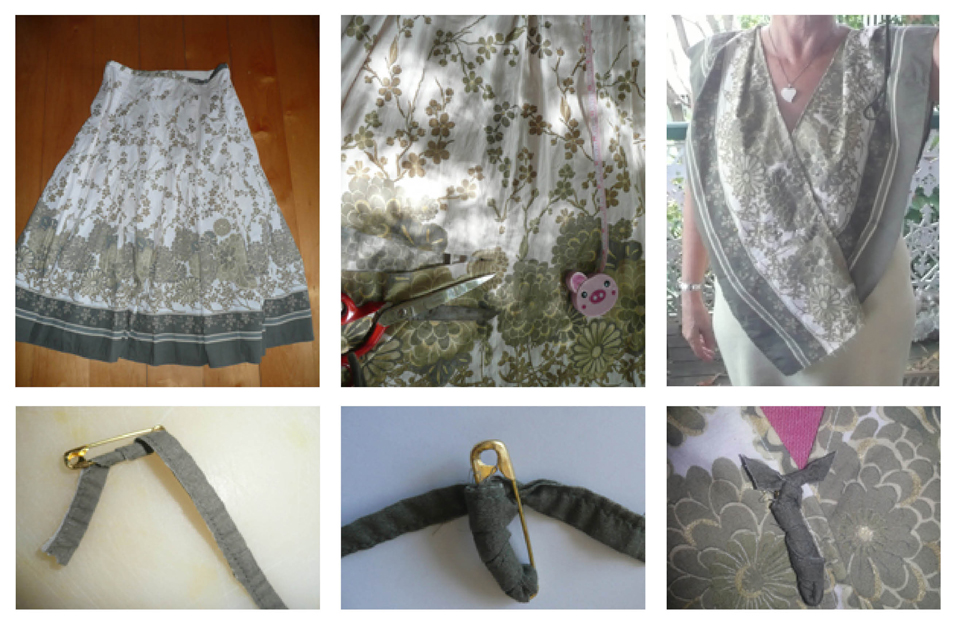 This skirt was lovely in its day but wasn’t being worn so I’ve given it a second life as a dress that is fitted with the help of fabric-covered safety pins – which I’m calling fabpins.
This skirt was lovely in its day but wasn’t being worn so I’ve given it a second life as a dress that is fitted with the help of fabric-covered safety pins – which I’m calling fabpins.
You need to find good quality safety pins and wrap them bottom to top with a strip of fabric that is then anchored by a knot. They can be used in place of buttons, but ideally need to be unpinned and excluded from the wash.
Good quality cotton fabric such as was used for this skirt has a high thread count, feels beautiful to touch and can last for decades. It is a shame to see such garments tossed out when styles change and wearers move on to the next best thing keeping up with the latest fashion.
A great Opinion Letter in the 4 January issue of New Scientist magazine provides a fresh take on the idea of ‘keeping up with the Joneses’ which is relevant here.
Wiebina Heesterman from Birmingham UK suggests a switch to ‘powering down with the Joneses’ and challenging neighbours to take actions to help reduce waste and fix the climate.
Wiebina says then you can say things like: “We use far less energy than anyone else in the street, we only had to pay $500 for gas and electricity this year, what about you? Or: “Look at my 1920s dress: it belonged to my great grandmother – I bet you haven’t got anything that beautiful.”
I’ve got a few garments that belonged to my Great Great Aunt Winnie stashed in a top cupboard somewhere which I upcycled and wore during university days (back in the late ‘70s that was!). They’ll be ready for re-upcycling soon as part of my 365-day upcycling journey this year.
 Meanwhile with Sew it Again 10, I cut off the bottom border of the skirt and cut it in two. I draped these two panels to form the top, making tucks at the shoulders and sewing the panels to the skirt band, which opens with a side zip. I sewed the top panels together at the side opposite the zip, and secured the overlaps front, back and zip-side using fabpins.
Meanwhile with Sew it Again 10, I cut off the bottom border of the skirt and cut it in two. I draped these two panels to form the top, making tucks at the shoulders and sewing the panels to the skirt band, which opens with a side zip. I sewed the top panels together at the side opposite the zip, and secured the overlaps front, back and zip-side using fabpins.